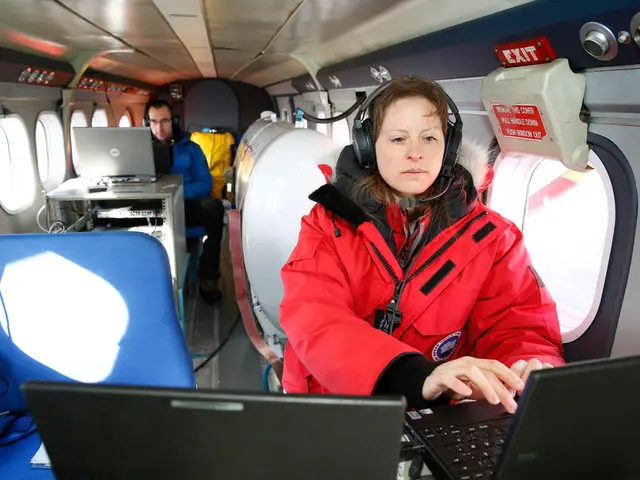Viasat's ViaSat-3 F2 Satellite En Route to Florida for October Launch
Viasat's ViaSat-3 F2 satellite has reached Florida, gearing up for launch later this year. The mission, however, has faced a delay due to issues with its predecessor, ViaSat-3 F1. Analysts now suggest a potential shift in coverage plans for ViaSat-3 F1.
ViaSat-3 F2, a six-ton satellite, is set to provide terabit-per-second broadband services over the Americas starting in 2024. It's about the size of half a football field and will offer more bandwidth than all 23 satellites in Viasat's current fleet combined. This satellite is due to launch in the second half of October, integrated with a United Launch Alliance Atlas 5 rocket.
The launch was delayed due to an antenna deployment issue on ViaSat-3 F1, launched earlier this year. As of October 2023, specific details about these corrections and their impact on ViaSat-3 F2's deployment plans remain unclear. Viasat and Northrop Grumman, the supplier of ViaSat-3 F1's antennas, are yet to provide detailed updates.
Boeing is also working on ViaSat-3 F3, which will cover Asia and use a deployable mesh antenna from L3Harris. This satellite is slated to enter service in early to mid-2026. Meanwhile, analysts propose moving ViaSat-3 F1 to cover Europe, the Middle East, and Africa after ViaSat-3 F2's launch, given the satellites' global operability design.
Viasat's ViaSat-3 F2 is en route to Florida for launch later this year, following delays due to antenna issues on ViaSat-3 F1. While the impact of these issues on ViaSat-3 F2's deployment remains uncertain, analysts suggest a potential coverage shift for ViaSat-3 F1. The ViaSat-3 series aims to provide global broadband services, with ViaSat-3 F3 set to cover Asia in the coming years.
Read also:
- Middle Eastern airports endeavor to advance in technology and eco-friendliness, with Dabico gazing up in anticipation
- NASA's Supersonic Flight Test Over Mojave Desert a Success
- Ancient Fossilized Footprints Indicate Cohabitation of Two Hominin Species 1.5 Million Years Back
- "Unveiling the Inner Workings: An Exclusive Account of How the Manhattan Project Created the A-Bomb - Changing the Course of History"








